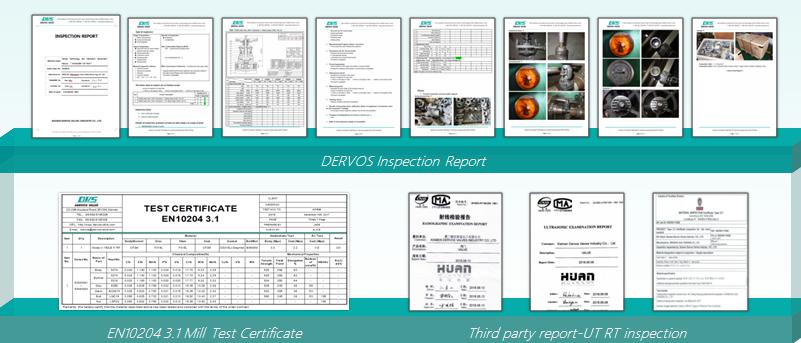The 8 inch top entry ball valve with features of cavity pressure self-relief and emergency sealant injection is designed as per API 6D. It’s capable to handle working pressure up to 900LB.
Payment:
30% when order confirmed, 70% before shipmentProduct Origin:
ChinaColor:
CustomizationShipping Port:
Shanghai, ChinaLead Time:
30~60 days Ex Works after order confirmationMaterial:
ASTM A105.Method of Operation:
Bare StemQuick Details
|
Type |
Ball Valve |
|
Nominal Diameter |
2"~60" (DN50~DN1500). |
|
NominalPressure |
150 lbs~2500 lbs (PN16~PN420). |
|
Construction |
Top Entry,One Piece Type |
|
Connection |
BW,RTJ |
|
Operation |
Gearbox, Electric, Pneumatic, Elector Hydraulic Actuator, Gas Over Oil Actuator. |
|
Body Material |
ASTM A105. |
|
Design Code |
API 6D. |
|
Pressure & Temp |
ASME B16.34 |
|
End toEnd Dimension |
ASME B16.10 |
|
Inspection |
API598 |
|
Temperature Range |
-46℃~+200℃. |
|
Media |
Oil, Water, Gas |
Dervos top entry ball valves are engineered to meet international standards of API 6D, ASME B16.34 and others on request. The range contains both soft , metal or composite seats that can be configured to provide an effective double block and bleed (DB&B) .
Features
·Soft, metal or composite material seated
·Bi-directional tight shut-off
·Double block & bleed
·Fire safe and fire tested
·Low operating torque design
·Wide range of materials and sizes
·Anti-blowout stem design
·Suitable for above ground or below ground installation
·Top-entry design enable maintenance in line
·Forged or cast body optional
·Extended Bonnet
Reports
Along with each order, Dervos will provide inspection reports and material test reports free of charge after shipment. All these certificates will let you have a clear picture of inspection process and results. Plus, these reports can be used for traceability.

If you are interested in our products and want to know more details,please leave a message here,we will reply you as soon as we can.